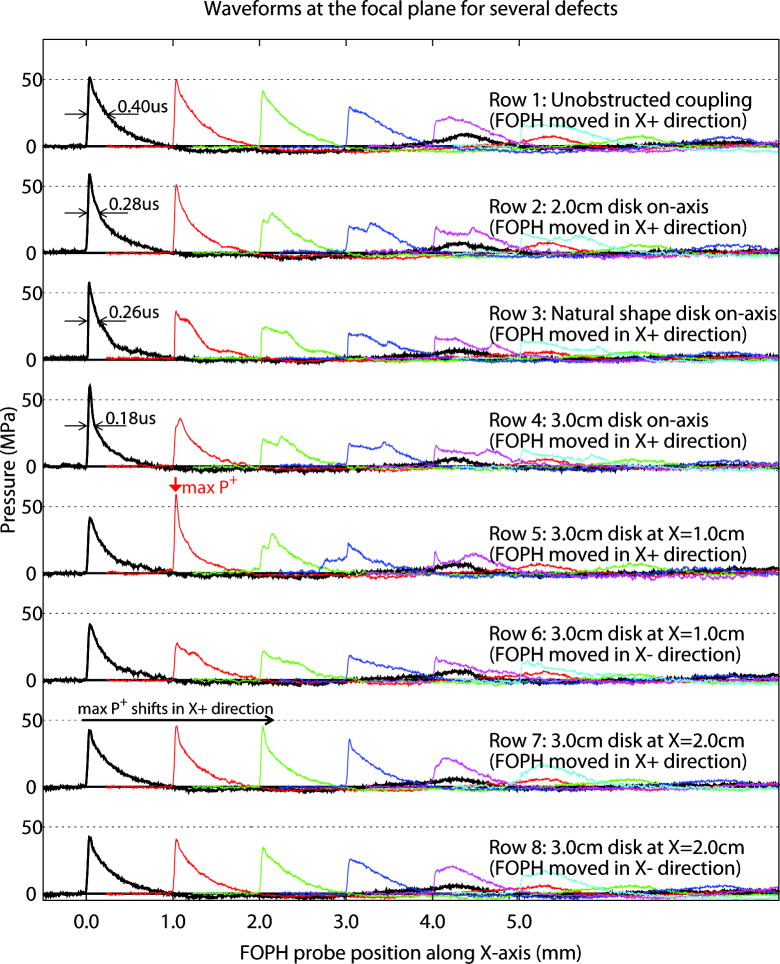Figure 8.
Effect of size and location of coupling defects on shock waves collected on-axis and at 1.0 mm steps lateral to the acoustic axis. As defects on-axis were increased in size (rows 1–4), P+ on-axis (X=0 mm) increased slightly while duration of the positive pressure phase (measured at half-amplitude, arrows) decreased from 0.40 μs for unobstructed coupling (row 1) to 0.18 μs for a 3.0 cm defect (row 4). Shock waves measured for a replica of an actual air pocket (natural defect) having area ~25% greater than the 2.0 cm defect showed profiles intermediate between the 2.0 and 3.0 cm circular defects (rows 2, 4). Increase in size of the defect also reduced pressure amplitude off-axis (rows 1–4). When defects were located on-axis, the acoustic field at the focal plane was symmetrical with a maximum at X=0 mm (rows 1–4). Moving the defect off axis disrupted the symmetry of the field, shifting the position of maximum P+ laterally. Placement of a 3.0 cm defect 1.0 cm off-axis shifted maximum P+ ~1.0 mm laterally (row 5, X=1.0 mm) while moving the defect to 2.0 cm lateral position shifted maximum P+ further off axis (row 7, X=1.0 mm and X=2.0 mm) (see Fig. 7).

